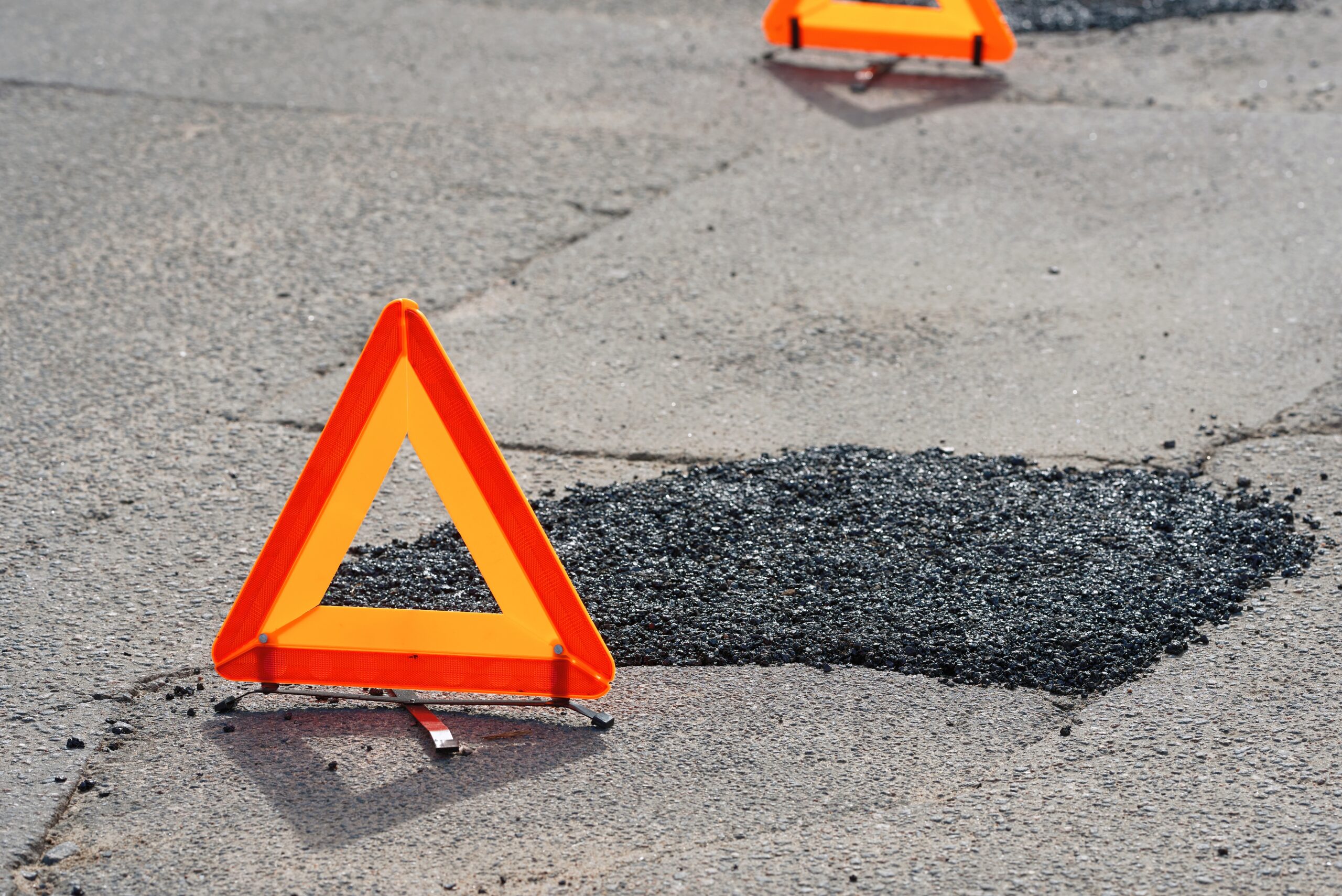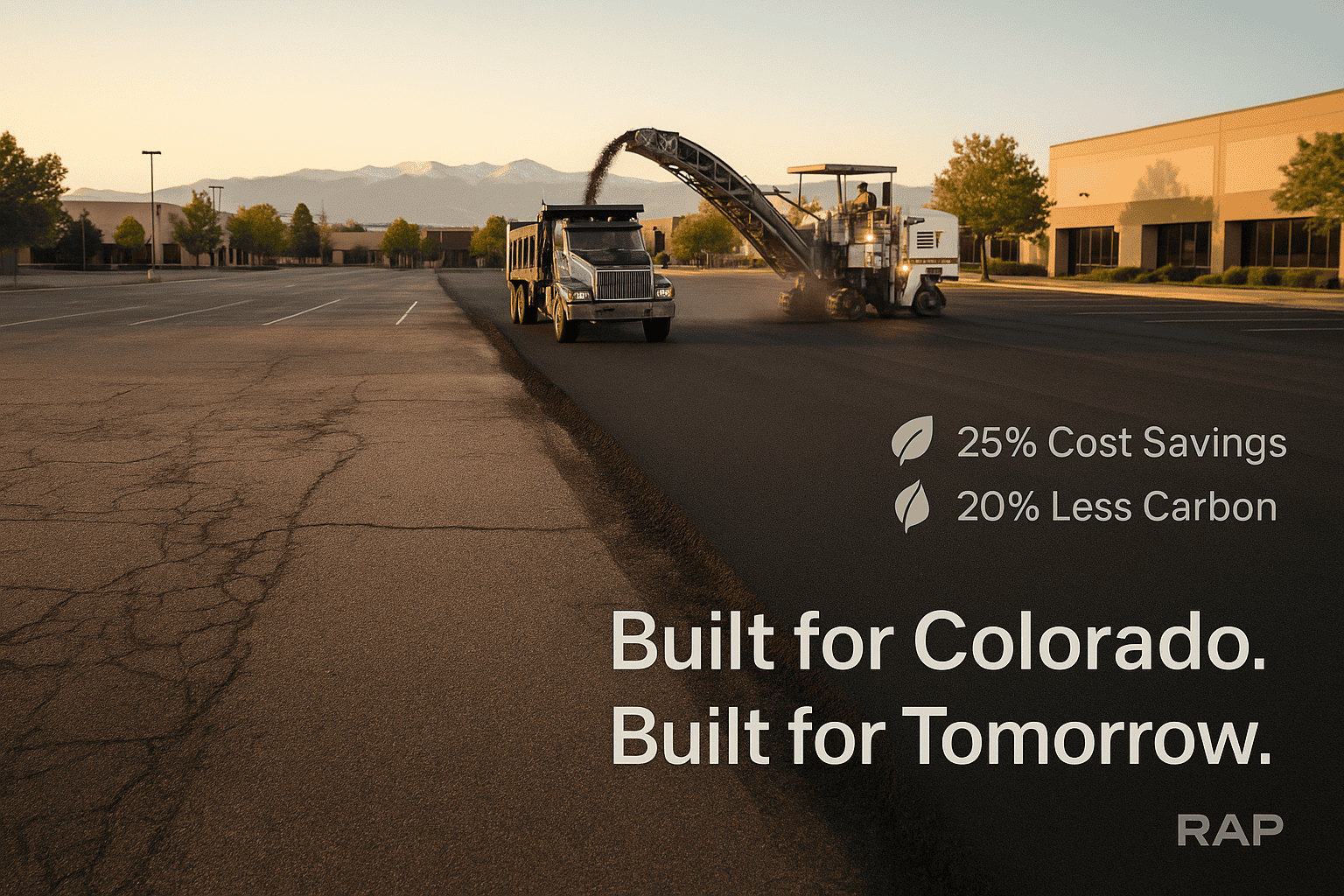
Asphalt is designed to last. But only when it’s installed, maintained, and appropriately protected. The truth is, even one poorly timed decision can cut asphalt’s lifespan from decades to just a few years.
Whether managing an apartment complex, a commercial center, or a large parking lot, ignoring crucial steps in the paving process can result in costly damage and frequent repairs.
In this guide, we’ll explore the top five mistakes that degrade asphalt faster than expected, why they matter, and, most importantly, how to prevent them. We’ll also include advanced tips, a protection checklist, and seasonal insights to help you approach your asphalt projects like a pro.
The True Cost of Early Asphalt Failure
A well-installed asphalt surface can last 20 to 25 years. When maintained correctly, it supports traffic demands, endures weather fluctuations, and maintains its strength and visual appeal over time. However, when key details are overlooked, such as water drainage or base preparation, the surface becomes vulnerable, and its lifespan decreases significantly.
Common Damage from Avoidable Mistakes Includes:
- Cracks that widen over time and lead to potholes
- Surface fatigue and brittle, crumbling edges
- Premature fading and oxidation
- Sinking or uneven areas due to poor support underneath
Aside from repair expenses, damaged asphalt poses liability risks, reduces curb appeal, and can hinder access or operations for tenants and customers.
Mistake #1: Poor Base Preparation
If your asphalt is failing just one or two years after installation, chances are the problem began below the surface. The base is the most essential part of the paving process, and it’s often where installers try to cut corners.
Why It Happens:
- Insufficient excavation or grading
- Soft or unstable subgrade materials
- Rushed timelines, skipping proper compaction
What It Causes:
The pavement starts to sink or develop cracks because the ground underneath can’t support the weight of traffic. Over time, minor imperfections worsen into major surface failures, such as rutting or alligator cracking.
How to Avoid This Mistake:
- Use quality aggregate, such as crushed stone, for the base
- Grade the base properly to distribute weight evenly
- Compact the base in uniform layers using the correct equipment
- Allow time for each layer to settle before adding the next
- Always choose qualified contractors with a track record in commercial prep work. The strength of your asphalt surface depends on what lies beneath it.
Mistake #2: Skipping Routine Maintenance
Once your asphalt is in place, it can be easy to forget about it. That is until damage starts to show. But care and upkeep are what keep that clean, blacktop look and the structural integrity in place.
Why It Happens:
- Maintenance seems unnecessary when the pavement “looks fine.”
- Property owners delay inspections or repairs.
- Budget constraints lead to skipped upkeep.
What It Causes:
Neglected cracks allow water to seep into the layers beneath, which freeze and thaw during seasonal cycles. This accelerates breakage, pothole formation, and subbase erosion. Ignoring sealcoating also results in UV damage and brittleness.
How to Avoid This Mistake:
- Sealcoat your surface every 2–3 years to protect against sun and water exposure
- Inspect pavement quarterly and check for minor cracks or holes
- Patch and fill small cracks before they expand
- Remove debris and standing water regularly from low areas
Don’t wait for visible damage. Create a maintenance calendar and budget to keep your surface performing at its best.
Mistake #3: Choosing Low-Quality Asphalt Materials
Asphalt isn’t all the same. Lower-cost mixtures may save money upfront, but they can lead to long-term headaches. Cheap materials often lack the proper balance of binders and aggregates, which can impact durability and flexibility.
Why It Happens:
- Selecting the lowest bidder for materials and paving
- Lack of knowledge about what mix is needed for the property
- Suppliers using recycled materials that aren’t right for heavy traffic loads
What It Causes:
Asphalt begins to degrade more quickly, especially in extreme temperatures. You’ll notice rapid fading, surface cracks, and erosion at high-traffic areas, such as loading zones or entrances.
How to Avoid This Mistake:
- Insist on hot mix asphalt suitable for the region’s weather patterns
- Use mixes with the right amount of binder and aggregate size for durability
- Partner with contractors who use reliable, trusted suppliers
- Always ask what type of asphalt mix is being used and whether it’s the correct formulation for your specific climate and traffic.
Mistake #4: Ignoring Drainage Design
One of the most overlooked causes of asphalt damage is related to water, not from storms or floods, but from surfaces that are not built to safely and efficiently direct water away.
Why It Happens:
- Flat or low spots are not addressed during grading
- Design skips, curbs, swales, and catch basins
- Drainage systems become blocked with debris over time
What It Causes:
Standing water softens the base and weakens the asphalt above it. Over time, moisture freezes and expands, causing the material to crack and break. Water also accelerates the chemical breakdown of asphalt, especially when combined with oil and vehicle fluids.
How to Avoid This Mistake:
- Grade pavement with at least a 2 percent slope for water runoff
- Add drainage infrastructure where necessary, such as basins, curbs, or drains
- Keep nearby landscaping trimmed and remove debris near curbs and sewers
- After heavy rains, visually inspect your lot. If you notice any standing water after 48 hours, it’s time to reassess your drainage strategy.
Mistake #5: Inconsistent or Incorrect Installation
Even with good planning and materials, poor execution during installation can undermine the entire project. Most issues stem from inexperience, improper equipment use, or bad weather timing.
Why It Happens:
- Working in cold, wet, or rushed conditions
- Untrained labor or low-cost crews skipping necessary steps
- Use of outdated machinery or poor-quality compaction plugins
What It Causes:
Pavement may appear fine at first, but within months, you’ll notice air pockets, separated layers, cracked edges, or areas where traffic wears into the surface too quickly.
How to Avoid This Mistake:
- Install only in temperatures between 50 and 90°F under dry skies
- Ensure asphalt is applied at the right temperature (185–300°F)
- Compact using vibratory rollers and plates to eliminate air pockets
- Confirm proper thickness, with a minimum of 2.5 inches for light vehicle traffic
- Always confirm project timelines in relation to the forecast. Installation should be strategic, not hurried.
How Strategic Timing Protects Your Pavement Year-Round
Different times of the year bring different risks to your asphalt. Planning means fewer surprises and better outcomes.
- Spring through Early Fall: Best for Installation
These months offer optimal temperatures and drier weather, which lead to stronger bonding and smoother finishes. - Late Fall and Winter: Maintenance Mode
This is the time to clean, patch minor cracks, and get ready for freeze cycles. Avoid major paving projects unless it’s an emergency. - Summer: Watch for Heat Fatigue
High heat can cause asphalt to soften. Watch for rutting or oil bleeding in high-traffic areas.
Avoiding the Rush Pays Off
A large commercial property in the Denver metro area was facing tight deadlines for installing a new parking lot. A stretch of rainy weather prompted the project lead to proceed anyway. After consulting with a professional, they decided to wait a week for dry weather. The result was a finish with no cold seams, even compaction, and strong adhesion. Two years later, the surface remains intact, with no potholes and no corrective overlays required. That short delay saved them over $10,000 in potential future repairs.
Expert Tips for Asphalt Longevity
To take your surface from good to great, consider implementing these best practices:
- Add edge support to prevent cracking from vehicles rolling off
- Avoid heavy load concentration in one area, such as dumpsters or delivery trucks
- Rely on regular sweeping and pressure washing to reduce surface wear
- Use reflective paint for line striping to reduce heat absorption
Asphalt Protection Checklist
Use this checklist to identify common asphalt mistakes and prevent costly repairs quickly:
| Mistake | What to Watch For | Prevention |
| Poor Base Preparation | Sinking, cracks within the first year | Compact subbase, grade properly |
| Skipping Maintenance | Faded surface, growing cracks | Sealcoat every 2–3 years |
| Low-Quality Materials | Premature fading, brittleness | Use high-grade hot mix asphalt |
| Drainage Issues | Water pooling, potholes near curbs | The grade for runoff, install proper drains |
| Bad Installation | Uneven surface, early cracking | Follow the temp and compaction guidelines |
Frequently Asked Questions
What are the most common mistakes that cause asphalt to deteriorate faster?
Some of the most frequent issues include poor base preparation, lack of routine maintenance, the use of low-grade materials, inadequate drainage design, and reliance on improper installation methods.
How does poor base preparation affect asphalt lifespan?
When the sub-base isn’t properly excavated, graded, or compacted, the asphalt above can settle unevenly, leading to premature cracking, sinking, and pothole formation.
Why is regular maintenance necessary for asphalt surfaces?
Ongoing care, such as sealcoating, crack sealing, and debris removal, shields the surface from water intrusion, UV damage, and general wear, helping your pavement last longer and perform better.
How does drainage impact asphalt durability?
Without proper drainage, water can collect and weaken the base layer. Over time, this leads to soft spots, cracks, potholes, and accelerated wear, especially in freeze-thaw conditions.
What role does asphalt material quality play in pavement performance?
Asphalt mixes made with high-grade aggregates and the proper binder ratios offer superior durability. They’re more resistant to rutting, cracking, and temperature-related damage compared to low-quality mixes.
When is the best time of year to install or repair asphalt?
The ideal time for new installations is during spring through early fall, when temperatures are warm and conditions are dry. Late fall and winter are better suited for minor repairs and maintenance work.
Ensure Long-Lasting Asphalt Results with Front Range Specialists
Asphalt pavement is an investment that supports your property’s safety, access, and appearance. Avoid the five key mistakes discussed in this guide. Poor base preparation, skipped maintenance, low-quality materials, inadequate drainage design, and incorrect installation can significantly reduce the lifespan of your surface and increase long-term costs.
When the time comes to install, repair, or maintain your next project, connect with Asphalt Coatings Company, proudly serving the Front Range since 1986. With a proven track record of reliability, high-quality craftsmanship, and unmatched customer service, they are the trusted choice for commercial paving excellence.


